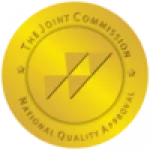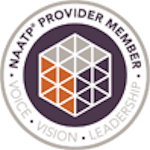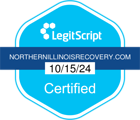In the U.S., more than 130 million people take prescription drugs. Over 16 million people misuse their medications, with almost 10 million abusing prescription opioids. Once a person develops a prescription drug addiction, they often need prescription drug detox to manage withdrawal symptoms and begin their recovery journey.
The changes in the brain can affect decision-making, judgment, and self-control. Besides addiction, prescription drug misuse can lead to serious health problems and overdose. The more prescription drugs a person takes, the more they crave. Prescription drug detox centers are dedicated to easing a person’s withdrawal symptoms.

How Do People Become Addicted to Prescription Drugs?
These euphoric feelings start to diminish the more a person continues to use prescription drugs. To achieve the same effects, a person must take prescription drugs more frequently or at higher doses. People may also start feeling withdrawal symptoms when they don’t take their drugs.
Taking prescription drugs like opioids regularly increases the risk of addiction. Whether or not a person develops an addiction varies, but it typically takes less than a few weeks. While taking prescription drugs for a day or two is generally safe, studies show just one dose can cause psychological changes in people vulnerable to addiction.

How Does the Detox Process Work?
While prescription drug detox helps rid the body of toxins, it is not a cure for addiction. Long-term recovery requires psychotherapy, group therapy, and a variety of behavioral therapies. Substance use disorder treatment programs address mental health issues and provide the tools and skills to manage triggers and prevent relapse.
Why is Prescription Drug Abuse Dangerous?
Eventually, a person becomes dependent on these drugs. Once dependence develops, a person who tries to lower their dose or stop using prescription drugs experiences withdrawal symptoms like nausea, vomiting, and tremors.
People with severe prescription drug addiction who try to stop often experience a crash or extreme withdrawal. They may feel irritable, anxious, and depressed. Without the help of a prescription drug detox center, a person’s mental health issues can worsen. They may also develop liver damage, kidney failure, a stroke, seizure, or coma. Medical detox also minimizes the risk of death when detoxing from prescription drugs.
What Makes Prescription Drug Detox Necessary?
Withdrawal symptoms from prescription drugs also vary depending on the substance and the individual. But common withdrawal symptoms include sweating, chills, headache, and body aches. Going through withdrawal from drugs also impacts a person mentally and can produce intense cravings.
FDA-approved medications are often used in prescription drug detox to manage withdrawal symptoms. However, some of these medications can be addictive. It is vital that the use of these drugs be monitored closely.

Prescription Drug Detox and the Importance of Support
Psychological withdrawal symptoms during prescription drug detox can be severe and life-threatening if not treated. Some of these symptoms include severe depression, suicidal thoughts, and ideations.
What are the Signs of Prescription Drug Addiction?
Common signs of prescription drug abuse include:
- Making poor decisions
- Taking higher doses than prescribed
- Changes in sleeping patterns
- Hostility
- Appears intoxicated, overly energetic, or lethargic
- Mood swings depending on the availability of prescription drugs
- Irritability
- Doctor shopping
- Borrowing medications from others
- Crushing or breaking pills
- Lying about the amount of medication taken
- Stealing prescription drugs
- Cravings
Different Types of Prescription Drugs Abused
- Opioids – prescribed to treat pain
- Central Nervous System (CNS) Depressants – treat anxiety and sleep disorders
- Stimulants – most commonly treat ADHD (Attention Deficit Hyperactivity Disorder)
Commonly Abused Opioids and Signs of Abuse
- Fentanyl (Duragesic)
- Hydrocodone (Vicodin)
- Oxycodone (OxyContin)
- Oxymorphone (Darvon)
- Hydromorphone (Dilaudid)
- Meperidine (Demerol)
- Diphenoxylate (Lomotil)
- Morphine Sulfate
Common signs of prescription opioid abuse include:
- Depression
- Confusion
- Excessive sweating
- Constipation
- Hypotension
- Decreased respiratory rate
- Impaired coordination
- Impaired judgment
- Increased risk-taking behaviors
CNS Depressants Commonly Abused and the Signs
- Pentobarbital sodium (Nembutal)
- Diazepam (Valium)
- Alprazolam (Xanax)
- Zolpidem Tartrate (Ambien)
- Sertraline (Zoloft)
Common signs of CNS depressant abuse include:
- Drowsiness and excessive sleepiness
- Unsteady gait
- Rapid eye movements
- Dizziness
- Confusion
- Appears intoxicated
- Involuntary movements or tics
- Memory issues
- Poor judgment
- Lowered inhibitions
Commonly Misused Prescription Stimulants and Signs of Abuse
- Dextroamphetamine (Dexedrine)
- Methylphenidate (Ritalin and Concerta)
- Amphetamines (Adderall)
- Weight loss
- Appetite suppression
- Decreased need for sleep
- Irritability
- Agitation
- Impulsivity
- Reckless behaviors
- Restlessness
- Cardiac arrhythmias
Facts About Prescription Drug Abuse
Prescription drug abuse is on the rise because more drugs are available, doctors are writing more scripts, and the internet makes it easy to obtain these prescription drugs. Furthermore, teens are stealing medications from their parents and grandparents.

Prescription Drug Abuse Statistics in the United States
- Around 16 million Americans abuse prescription drugs
- Over 1600 teens begin abusing prescription drugs every day
- People believe prescription drugs are safer than illicit or “street” drugs
- Approximately 1 in 4 teens report misusing prescription drugs
- Over 43 percent of first-time drug abusers use opioids, and 32 percent use sedatives or depressants
Prescription Drug Detox and Continuing Treatment
Prescription drug detox is not a cure for addiction. People who do not continue into a treatment program are at an increased risk of relapse. Finding a comprehensive addiction treatment facility offers the best chance at lasting recovery.




